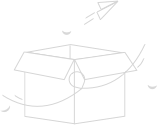-
Observations and Interviews 2013
普通类 -
- 支持
- 批判
- 提问
- 解释
- 补充
- 删除
-
-
Observations and Interviews
This session is to introduce the use of interviews and observational approaches ranging from unstructured to structured approaches, participant to non-participant observation. Different types of interviews will be compared, and particular attention will be given to semi-structured interviews. Issues such as the advantages and limitations of observation will be discussed through the presentation of a number of research studies which have used observation. Students will be asked to practice practical interview and observational skills in case studies.
Key Questions:
How to conduct individual and group interviews?
- Why interviews?
- What kind of interviews do we need in our research, structured, semi-structured, unstructured?
- What to ask in interviews? How to ask the questions in interviews?
What to look for in observations?
- Why observations?
- What is the role of an observer?
- How to record observations?
Readings:
Bryman, A (2008), Social Research Methods, Oxford University Press, Third Edition.
Bryman, A (2008), Social Research Methods, Oxford University Press, Third Edition. Data Collection - Purple.pdf
Robson, C (2011). Real World Research. Wiley-Blackwell, Third Edition. Interview - real world research.pdf and Observational Methods - real world research.pdf
Kvale, S. (1996). InterViews: An introduction to qualitative research interviewing (pp. xvii, 326 p). Thousand Oaks, CA: Sage Publications.
DeWalt, K. and DeWalt, B (2002) Participant Observation: A guide for fieldworkers Walnut Creek: AltaMira Press
Walker, R and Adelman, C (1975) A Guide to Classroom Observation London, Methuen
Walker, R. and Adelman, C. (1975) Interaction analysis in informal classrooms: a critical comment on the Flanders' system British Journal of Educational Psychology 45, 73-76. Reprinted in Martyn Hammersley (ed.) Controversies in Classroom Research Milton Keynes, Open University Press
Stake, R.E. (1995) The Art of Case Study Research. London: Sage
Yin, R.K.(1994) Case Study Research. London: Sage
Please click on here to reflect on what you have learned from this session.
Articles
-
-
- 标签:
- 20131009175028
- world
- observation
- university
- edition.
- methods
- observations
- 学习元
- real
- research
- case
- interviews
-



学习元评论 (0条)
聪明如你,不妨在这 发表你的看法与心得 ~